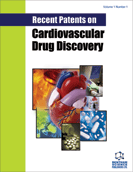Abstract
ω-3 and ω-6 Polyunsaturated fatty acids (PUFA) are the major families of PUFA that can be found as components of the human diet. After ingestion, both ω-3 and ω-6 PUFA are distributed to every cell in the body where they are involved in a myriad of physiological processes, including regulation of cardiovascular, immune, hormonal, metabolic, neuronal, and visual functions. At the cell level, these effects are mediated by changes in membrane phospholipids structure, interference with eicosanoid intracellular signaling, and regulation of gene expression. Two longchain ω-3 PUFAs, the docosahexaenoic (DHA) and eicosapentaenoic (EPA) acid, are found in fatty fish and other marine sources and might be the putative dietary components thought to modify the cardiovascular risk in subjects consuming high amounts of such food. Evidence of an inverse relationship between fatty fish intake and cardiovascular risk has, in fact, emerged in studies performed more than twenty years ago in Eskimos and has been subsequently confirmed in other ethnic groups. The benefits of ω-3 PUFA might relate principally to prevention of coronary heart disease, coronary artery restenosis after angioplasty, and sudden arrhythmic death. In this brief review, we will cover the general biochemical aspects of ω-3 PUFA, summarize the evidence relating these fatty acids with control of cardiovascular risk factors and prevention of cardiovascular events, and overview the most recent and relevant patents that are related to these issues. More specifically, we will deal with the possibility to use PUFA in association with other molecules that can potentiate their antiinflammatory and antiatherogenic effects.
Keywords: ω-3 polyunsaturated fatty acids, ω-6 polyunsaturated fatty acids, docosahexaenoic acid, eicosapentaenoic acid, cardiovascular risk, atherosclerosis, inflammation, coronary heart disease, arrhythmia, aspirin
 30
30


